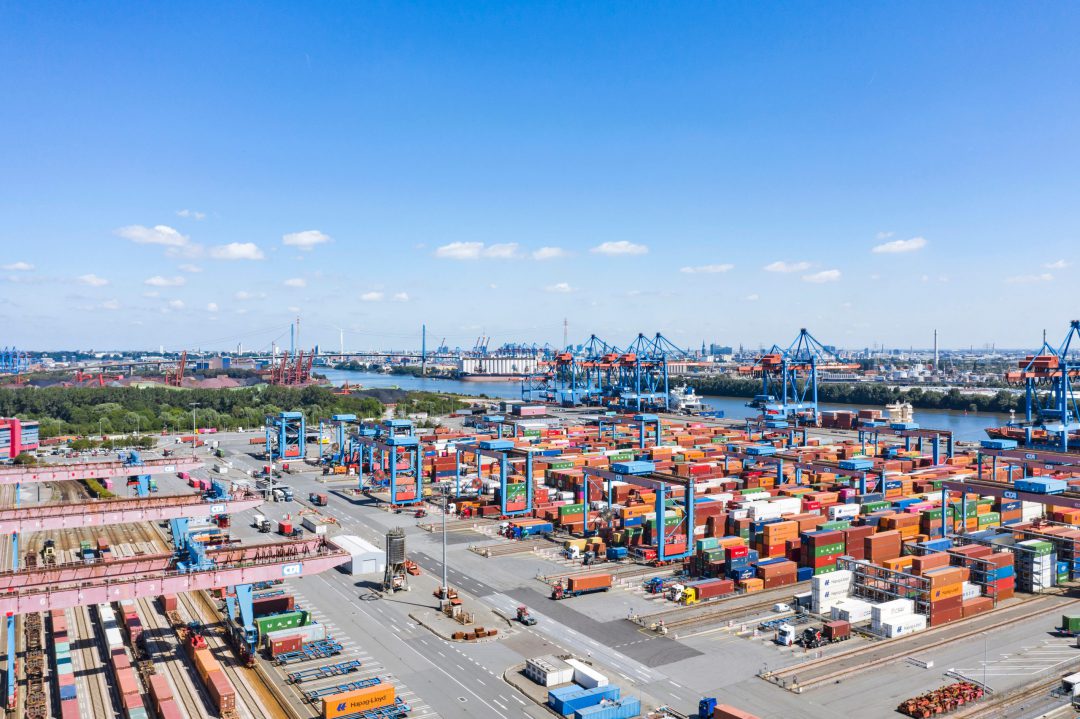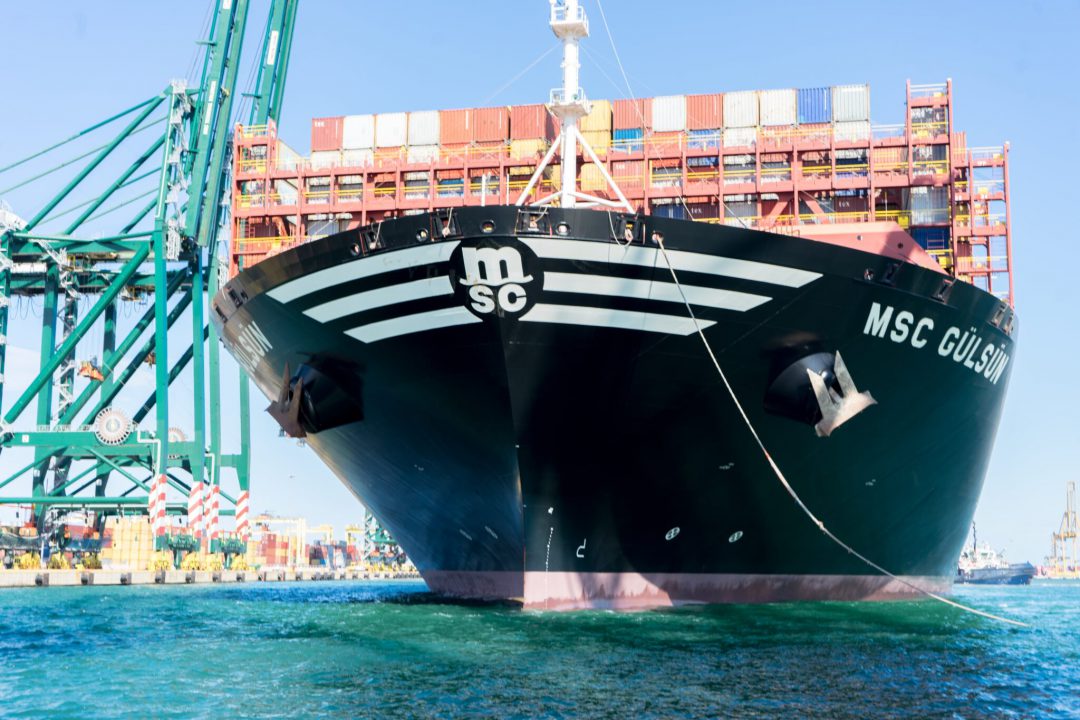Port Logistics subgroup: Business development January – March 2020
The listed Port Logistics subgroup recorded a moderate 3.7 percent drop in sales to EUR 327.4 million in the first three months (previous year: EUR 339.8 million). The operating result (EBIT) fell sharply by 41.7 percent to EUR 32.5 million (previous year: EUR 55.7 million). The EBIT margin decreased by 6.5 percentage points to 9.9 percent.
In the Container segment , the volume handled at HHLA container terminals fell by 3.7 percent overall to 1,796 thousand standard containers (TEU) (previous year: 1,865 thousand TEU).
At 1,652 thousand TEU, the handling volume at the three container terminals in Hamburg was 4.1 percent below the comparative value of the previous year (previous year: 1,722 thousand TEU).
Ship delays due to storm lows across Northern Europe and blank sailing as a result of the spreading coronavirus pandemic led to a moderate decrease in cargo volumes from the Far East. The international container terminals in Odessa and Tallinn with a handling volume of 144 thousand TEU were at the previous year’s level (previous year: 143 thousand TEU).
Revenue decreased in the first quarter of 2020 compared to 2019 by 2.6 percent to EUR 195.6 million (previous year: EUR 200.9 million). This resulted primarily from the pandemic-induced drop in volumes. Average revenues per container handled on the water side increased by 1.1 percent compared to the same period in the previous year. The reason for this was an advantageous modal split with a high proportion of hinterland quantities as well as a temporary increase in storage funds due to a longer stay as a result of weather-related delays. The operating result (EBIT) decreased by EUR 12.0 million or 31.7 percent year-on-year to EUR 25.8 million (previous year: EUR 37.8 million). The EBIT margin fell by 5.6 percentage points to 13.2 percent.
In the intermodal segmentContainer transport decreased by 5.1 percent to 378 thousand TEU (previous year: 398 thousand TEU). The decline in road transport was significantly more pronounced than in rail transport. The latter decreased by 3.3 percent compared to the previous year to 300 thousand TEU (previous year: 310 thousand TEU).
While the traffic from both the North German and sea ports on the Adriatic posted significant declines, strong growth in continental traffic compensated for part of the decline in the maritime sector. Road transport continued to decline in the previous quarters. In particular due to the weak development in the Hamburg area, the transport volume in a persistently difficult market environment decreased by 11.4 percent year-on-year to 78 thousand TEU (previous year: 88 thousand TEU). At EUR 116.8 million, sales were 5.8 percent significantly lower than in the previous year (previous year: EUR 123.9 million) and were thus somewhat more pronounced than the transport volume. Despite a slight increase in the share of rail in the total volume of HHLA intermodal transports from 77.9 percent to 79.4 percent, the average sales per TEU decreased due to a disproportionate decrease in cargo flows with longer transport distances.
The operating result (EBIT) decreased by 31.9 percent to EUR 17.2 million in the reporting period (previous year: EUR 25.3 million). In addition to the declining volume and sales development, the reason for this sharp decline is also increased fluctuations in the volume of import and export loads and the associated decrease in the utilization of the train systems. EUR 5.8 percent significantly below the previous year’s figure (previous year: EUR 123.9 million) and were therefore slightly more declining than the transport volume.
Port Logistics subgroup: Outlook for the whole of 2020
The coronavirus pandemic, which is now spreading worldwide, has prompted state bodies and authorities in almost all affected countries to impose measures to curb virus spreading to an unprecedented extent.
The main aim of the measures is to reduce social contacts between people. Both at national level and in international traffic, this leads to a contraction in economic activity, the depth and length of which cannot be reliably estimated. The contraction covers all areas of the economy and thus also international trade, which is important for HHLA.
A forecast is not reliably possible under the current general conditions, but it can be assumed that sales and operating profit (EBIT) in the Port Logistics subgroup will be significantly below the previous year. The primary cause for this are possible, at least temporarily, strong declines in container handling and transportation.
Real estate subgroup: business development January – March 2020 and outlook
HHLA real estate in the historic warehouse district and on the fish market area in Hamburg recorded stable sales development in a declining market environment. Revenues based on the fact that most of the two quarters were fully let in the previous year rose again moderately by 4.0 percent year-on-year to EUR 10.1 million (previous year: EUR 9.8 million). The cumulative operating result (EBIT) rose by 6.0 percent to EUR 4.1 million (previous year: EUR 3.9 million) due to revenue growth in both quarters with a constant maintenance volume.
The operating profit (EBIT) of the Real Estate subgroup is considered to be a result significantly below the previous year.

























